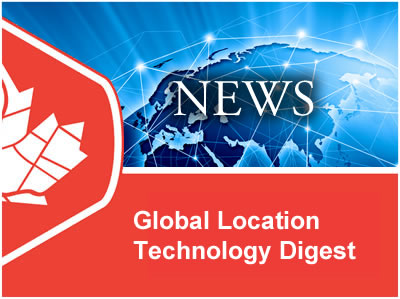
GIS is transforming key industries
The geospatial data market is expected to grow to $73.9 billion by 2021, benefitting seven key industries in the process: Agriculture, transportation, energy, retail, defence and intelligence, the federal government, and local government. Agricultural operations are generating more location-based data than ever before, collecting information from machine telemetry and weather stations; analysis of geospatial data is vital for making business decisions regarding transit routes, shipping and movement of resources; mapping and spatial analytics provide insight for energy exploration; retailers use smartphone data to track customer behaviour; geospatial technology is involved in every aspect of military and intelligence operations; and in terms of governance location technology is essential for making decisions that affect safety and security, infrastructure, resource management and quality of life. GIS technology is driving the most fundamental processes within communities and across the world.
Huawei activates AI to build smart cities

At their Smart City Summit in Shanghai, telecommunications giant Huawei offered space for industry experts and smart city practitioners to discuss how to build smart cities with AI. The company is currently developing a +AI Smart City Digital Platform, which integrates the Internet of Things, big data, video cloud, Geographic Information Systems, and converged communications resources. As well as using AI to strengthen the central nervous systems of cities, Huawei also has solutions for airports that will make air transit more refined, personalized, and efficient through IoT-based resources and smart devices.
New Argentine satellite for Earth observation
The Argentina National Space Activities Commission recently launched an Earth observation satellite that will support disaster relief efforts. The first of a constellation of two radar satellites, SAOCOM 1A will be part of a mission to provide timely information for disaster management and monitoring services. The satellite will analyze night and day imagery and produce 225 images per day, using L-band Synthetic Aperture Radar. The data will be used worldwide for agriculture, mining and ocean applications, particularly in Argentina and Italy.
Taking UAS Mapping to the next level

McKim & Creed is showing how drone technology is advancing civil engineering and surveying at the DJI AirWorks event. With close to 20 pilots, McKim & Creed are constantly searching for ways to stereo compile from an inexpensive UAS system and improve accuracy. The challenges of unmanned systems stem from a lack of understanding best practices and standards regarding hardware and software vendors. Companies need to understand how product manufacturers like McKim & Creed tailor solutions to the industry and use the right tool for the job. DJI Airworks is taking place in Dallas, Texas from October 30th to November 1st.
CNBC’s geospatial upstarts
CNBC’s annual Upstart 100 list features 3 geospatial companies this year: New Mexico-based Descartes Labs, which processes satellite imagery, Swedish company Mapillary, which produces digital street level mapping, and New Jersey-based Relola which provides location-based services. Start-ups are collecting huge investment from venture capitalists, garnering $11.5 billion in the second quarter of 2018. CNBC chose its Upstart companies from a list of 500 privately owned organizations, based on scalability, sales growth, workforce diversity, capital access, intellectual property, and industry size.




Be the first to comment